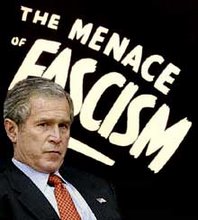By Paul von Zielbauer
The New York Times
Friday 28 September 2007
Camp Liberty, Iraq - An Army sniper is taught to kill people "calmly and deliberately," even when they pose no immediate danger to him. "A sniper," Army Field Manual 23-10 goes on to state, "must not be susceptible to emotions such as anxiety or remorse."
But in a crowded military courtroom seemingly stunned into silence on Thursday, Sgt. Evan Vela all but broke down as he described firing two bullets into an unarmed Iraqi man his unit arrested last May.
In anguished, eloquent sentences, Sergeant Vela, a member of an elite sniper scout platoon with the First Battalion, 501st Infantry Regiment, quietly described how his squad leader, Staff Sgt. Michael A. Hensley, cut off the man's handcuffs, wrestled him to his feet and ordered Sergeant Vela, standing a few feet away, to fire the 9-millimeter service pistol into the detainee's head.
"I heard the word 'Shoot,'" Sergeant Vela recalled. "I don't remember pulling the trigger," he said. "I just came through and the guy was dead, and it just took me a second to realize the shot had come from the pistol."
Then, Sergeant Vela said, as the man, a suspected insurgent, convulsed on the ground, Sergeant Hensley kicked him in the throat and told Sergeant Vela to shoot him again. Sergeant Vela, who is not on trial but faces murder charges in connection with the killing, said he fired a second time.
His testimony on Thursday, in the court-martial of Specialist Jorge G. Sandoval Jr., another sniper who is accused of murder, provided a glimpse into the dark moments of a platoon exhausted, emotionally and physically, by days-long missions in the region south of Baghdad that soldiers call the "triangle of death." In their testimony, Sergeant Vela and other soldiers described how their teams were pushed beyond limits by battalion commanders eager to raise their kill ratio against a ruthless enemy.
During a separate hearing here in July, Sgt. Anthony G. Murphy said he and other First Battalion snipers felt "an underlying tone" of disappointment from field commanders seeking higher enemy body counts.
"It just kind of felt like, 'What are you guys doing wrong out there?'" he said at the time.
That attitude among superiors changed earlier this year after Sergeant Hensley, an expert marksman, became a team leader, according to soldiers' testimony. Though sometimes unorthodox, soldiers said, Sergeant Hensley and other snipers around him began racking up many more kills, pleasing the commanders.
Soldiers also testified that battalion commanders authorized a classified new technique that used fake explosives and detonation wires as "bait" to lure and kill suspected insurgents around Iskandariya, a hostile Sunni Arab region south of Baghdad.
As their superiors sought less restrictive rules of engagement - to legalize the combat killing of anyone who made a soldier "feel threatened," for example, instead of showing hostile intent or actions - the baiting program, as it was known, succeeded in killing more Iraqis suspected of being terrorists, soldiers testified.
But testimony in proceedings for Sergeant Hensley and, on Thursday, for Specialist Sandoval, both of whom face murder charges in connection with separate killings of Iraqi men last spring, suggest that as the integrity of the battalion's secret baiting program began to crack, so did Sergeant Hensley.
Only a select group of snipers in the battalion were told of the program, but many more were ordered, without explanation, to carry the baiting items on missions, creating rumors that the items were intended to be planted on victims of unjustified killings, soldiers testified.
Sergeant Hensley, according to several snipers, added to such suspicions when he told a junior member of his team to plant a roll of copper wire - clear contraband - on a suspected insurgent that Specialist Sandoval killed on April 27 after being authorized to shoot by his platoon commander.
On a separate mission two weeks earlier, Sergeant Hensley had killed another Iraqi man he said appeared to be "laying wire" near an irrigation ditch, as the man's wife and children worked and played nearby.
Then on May 11, Sergeant Vela killed the unarmed man. Afterward, as he testified Thursday, Sergeant Hensley pulled an AK-47, a weapon favored by insurgents, out of his pack and placed it on the body, telling his team that the gun would "say" what happened.
Specialist Sandoval's court-martial on murder charges began here on Wednesday, and is scheduled to conclude Friday. Sergeant Hensley's court-martial on murder charges is scheduled to begin here Oct. 22.
An evidentiary hearing for Sergeant Vela, who took the stand on Thursday in the Sandoval court-martial after being granted immunity from incriminating himself in that case, is expected later this year.
Sergeant Murphy has been investigated for a killing of another Iraqi man on April 7. Prosecutors have warned two more battalion members that they are also suspected of committing possible crimes as accomplices in the murder cases.
Struggling to explain why a highly trained Army sniper unit, renowned for its lethal economy of patience and discipline, would bog down under a cloud of murder investigations, some soldiers in interviews faulted commanders for pushing units to keep their kill counts high.
Others pointed toward the outsized influence on the unit by Sergeant Hensley, who, according to other soldiers' testimony, was dealing with two recent deaths: that of a close friend, killed in a roadside bomb, and also the suicide of his girlfriend back home.
"Staff Sgt. Hensley just continued to drive on," said Specialist Joshua Lee Michaud, in testimony at the July hearing about the sergeant's toughness. "Both of them didn't even faze him."
A trainer of snipers, Sgt. First Class Terrol Peterson, testified Thursday that the very emotions a sniper must control to do his job properly - anxiety and remorse - sometimes emerge in unexpected and painful ways. "When a sniper breaks, he breaks bad," Sergeant Peterson said.
(In accordance with Title 17 U.S.C. Section 107, this material is distributed without profit to those who have expressed a prior interest in receiving the included information for research and educational purposes. I.U. has no affiliation whatsoever with the originator of this article nor is I.U endorsed or sponsored by the originator.)
The Nazis, Fascists and Communists were political parties before they became enemies of liberty and mass murderers.




No comments:
Post a Comment